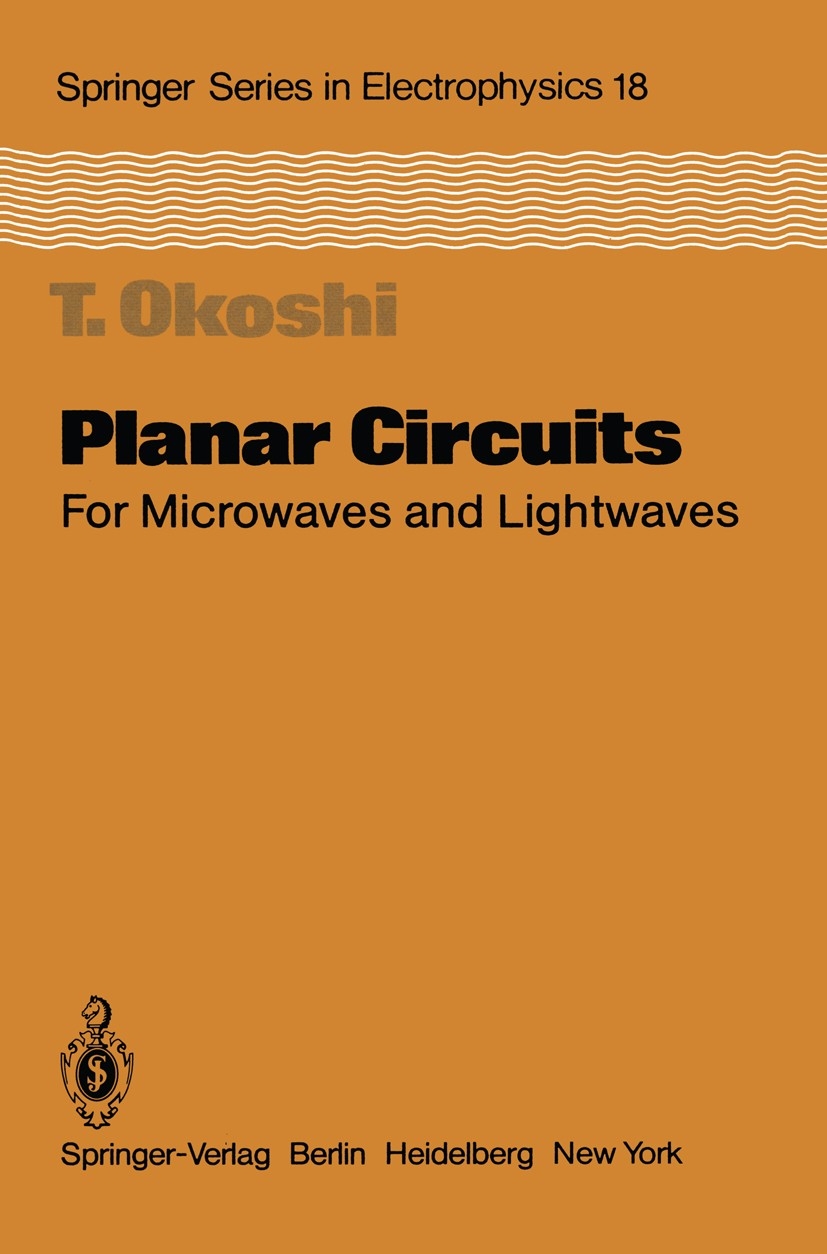| 書目名稱 | Planar Circuits for Microwaves and Lightwaves | | 編輯 | Takanori Okoshi | | 視頻video | http://file.papertrans.cn/749/748233/748233.mp4 | | 叢書名稱 | Springer Series in Electronics and Photonics | | 圖書封面 |  | | 描述 | Until recently, three principal classes had been known in the electrical cir- cuitry. They were as follows: 1) The lumped-constant circuit, which should be called a zero-dimensional circuit, in the sense that the circuit elements are much smaller in size as compared with the wavelength in all three spatial directions. 2) The distributed-constant circuit, which should be called a one-dimensional circuit, in the sense that the circuit elements are much smaller than the wavelength in two directions but comparable to the wavelength in one di- rection. 3) The waveguide circuit, which should be called a three-dimensional circuit, in the sense that the circuit elements are comparable to the wavelength in all three directions. The principal subject of this book is the analysis and design (synthesis) theories for another circuit class which appeared in the late 1960s and became common in the 1970s. This new circuit class is 4) the planar circuit, which should be called a two-dimensional circuit, in the sense that the circuit elements are much smaller in size as compared with the wavelength in one direction, but comparable to the wavelength in the other two directions. | | 出版日期 | Book 1985 | | 關(guān)鍵詞 | Planar; circuit; design; microwave | | 版次 | 1 | | doi | https://doi.org/10.1007/978-3-642-70083-5 | | isbn_softcover | 978-3-642-70085-9 | | isbn_ebook | 978-3-642-70083-5Series ISSN 0172-5734 | | issn_series | 0172-5734 | | copyright | Springer-Verlag Berlin Heidelberg 1985 |
The information of publication is updating

|
|
 |Archiver|手機(jī)版|小黑屋|
派博傳思國際
( 京公網(wǎng)安備110108008328)
GMT+8, 2025-10-14 10:27
|Archiver|手機(jī)版|小黑屋|
派博傳思國際
( 京公網(wǎng)安備110108008328)
GMT+8, 2025-10-14 10:27


